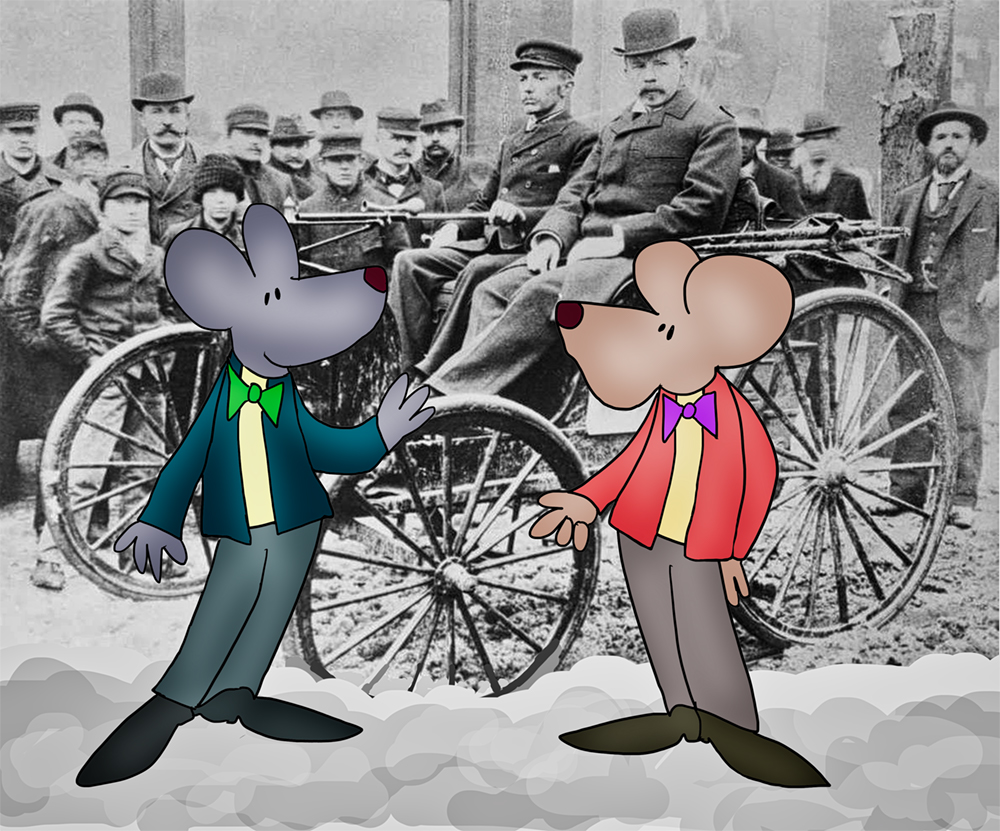
I’m not a big fan of car racing, and truthfully, it surprises me that I am not. I find that I drive much faster than most people, especially out on the open country roads. Too fast. There’s something about the imaginary wind sweeping through my imaginary hair if the windows were rolled down. Well. The air is real, and so is my hair, but I like to keep the windows shut tight for aerodynamic purposes.
Anyway. Car racing. I don’t watch it on TV and I have never been to a race. I went to the Speedway in Indy once, to see some time trials, but that was more of a college beer and food outing than anything.
Yet, a portion of the American population likes to watch racing. I have a brother who is very intrigued by the sport. But to me it just seems like hours of left turn, left turn, left turn, and on. Maybe others are growing tired of it too, as NASCAR isn’t hitting its highest ratings at this point.
But it all started somewhere. In fact, on this date, November 28, in 1895, America’s first car race took place, and oh, what a thing it was. The event was sponsored by the Chicago Times-Herald newspaper. They announced the competition on July 10 of that year. The race would be run in the great city of Chicago, and there would be prizes of up to $5,000. (That converts to about $150,500 now.)
So on this date in November, six cars took part in the race. But can you imagine? First of all, most roads were still composed of dirt / mud. And Automobiles were brand spanking new in America. The first ones had only been produced a couple of years before. When the reporters were pitching their stories, they couldn’t even come up with names for them yet. So, the editors called them Moto Cycles.
The race was shrouded with problems. A total of 83 cars signed up to compete, but only six cars made it. The others were not finished being built on time, or were unable to make the trip. The entrants had to drive their vehicles to Chicago, and were met by opposition on the way there. Police officers pulled them over and insisted that the cars be hauled in behind horses. They told the contestants they couldn’t drive on city streets with those new-fangled things. The Chicago Times-Herald editors had to convince the city leaders to pass an ordinance to confirm the rights of these vehicles to travel on city streets. Details. Details.
The route of the race went from Chicago to Evanston and back again. That was a 54 mile loop. Or 87 kilometers if you are metric flexible. Various cars competed. I don’t have the full list of racers. But the winner was Frank Duryea’s car, whatever kind that may have been. In second place was a German-made car by Karl Benz.
Duryea’s car timed in to the finish line at 7 hours 53 minutes. He traveled an average of speed of 7mph. Imagine the thrill of creeping along on that bumpy, muddy, snow-covered road. The Benz car came in an hour and a half later. One driver had to be replaced because he fell unconscious from exposure. Four of the cars didn’t finish.
And there you have it. America’s first auto race. It has come a long way since then, obviously, now a multi-billion dollar industry. It is filled with flash, and glitz, and skilled driving at high speeds. I, for one, think that first race may have been a little more interesting. It was a test of human spirit, more than anything I think.
And we all need a little good human spirit to keep our wheels turning.
==========
The race is not always to the swift, but to those who keep on running.
— Anonymous
==========
Slow but steady wins the race.
— Aesop
==========
“The only person you should compete with is the person you were yesterday.”
― Prem Jagyasi
==========